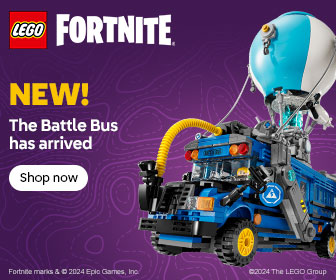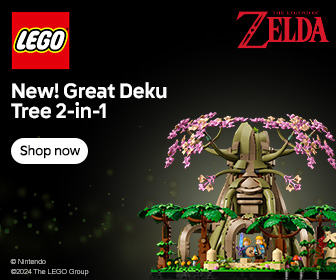The LEGO Group have worked closely with a number of much-loved brands to create an array of different LEGO® sets. The latest partnership is with Japanese arcade pioneer, Bandai Namco, which brings their iconic pixilated arcade chomper, PAC-MAN to life with LEGO bricks. The set is a marvel to look at and even more fun to construct but how did the set come to be? As well as reviewing the new set, I’ve been given the chance to chat with Sven Franic, the LEGO Designer behind the LEGO Icons PAC-MAN Arcade set. Sven offers a little insight into how the set was created.
Q1. How did the set come to be, was the idea taken to Bandai NAMCO or did they suggest a partnership?
The partnerships with external brands are handled by the marketing team and the creative lead. It was them who approached Bandai Namco with this idea after testing the feasibility of the function and deciding on whether it would be a good fit for our brand.
Q2. How much input did Bandai NAMCO have during the set’s development?
Bandai Namco collaborated on the design direction throughout the design process. It is always important for brands to have their properties represented as close to the original design as possible. With LEGO bricks we are used to a level of abstraction of shapes and colors due to the nature of the medium, so we have to make sure that both brand identities are translated well into the final product and understand what makes the LEGO interpretation unique.
Q3. Were there any different concepts for the set before settling on the final model?
We went through several phases of the model, mostly changing the size from a larger cabinet to a more condensed build. The original concept was built by LEGO designer James May and had a much larger footprint. It used a chain element built out of LEGO Technic beams driven by wheels and tires. It was a good proof of concept for the limited time that was devoted to exploring the function, but it was prone to failure and would only allow the characters to go around wide corners with a lot of spacing between the maze walls. It wasn´t until we decided on the small chain link element that the function started to look more promising. After that, the rest of the model could more easily adapt into a manageable size for a LEGO model.
Q4. What was the most difficult part of the set to perfect?
This may sound obvious, but the maze function took up the majority of the design process. Finding the right combination of pulleys and rounded elements to afford the characters a smooth ride through the maze walls was the trickiest part to get working. A huge breakthrough was deciding to build the maze on two 19×11 Technic plates which fit the Pac-Man grid 1:1.
Q5. How far into the set’s development was the new chain link element created?
We had a 3D-printed concept version of that chain element even before the first concept model was built. I am not sure what it was explored for previously, but it helped us as a starting point for the final element. The nice thing about that family of chain links is that it is reversible, so you can have the bar on either left or right side of the chain if you ever needed.
Q6. Is it easier to work on an original design or something based on an IP?
That’s a great question. I think it depends on where the designer’s comfort zone lies. I personally love working with IPs, but sometimes it’s nice to have a higher degree of creative freedom. One thing to take into consideration is that an original idea may invite more input from other designers and marketing managers, so you have to be good at balancing suggestions coming from different perspectives with varying levels of feasibility. In that sense, an IP partner can sometimes be demanding to meet expectations, but also offers a degree of protection to the boundaries of your design process.
Q7. What was the most interesting or surprising PAC-MAN fact you leant during the creation of the set?
That would have to be the color for Pac-Man inspired by LEGO Yellow. It is something I only learned very late in the design process.
Q8. Do you have any personal connection to PAC-MAN or arcade gaming in general?
I have some nostalgia for the times of the early arcade games and the general feel of the pixelated graphics, but due to where I grew up, we didn’t have arcades in the same sense they were present in the US. PC gaming was already quite popular by the time I was a kid. Pac-Man still had a huge presence as an icon in merchandise, so in a way, I think my generation has a connection with Pac-Man regardless of whether we spent days playing the game. The yellow disc represents a whole era of gaming and childhood to me.
Thanks to Sven for taking the time to take part in this interview and a big thanks to the LEGO Group for offering the opportunity to chat with Sven about the new LEGO Icons PAC-MAN Arcade set, which is available now. You learn more about the set in my review here.












